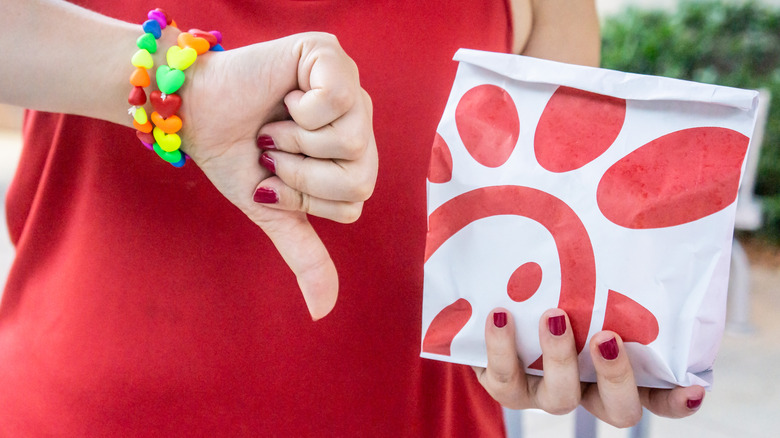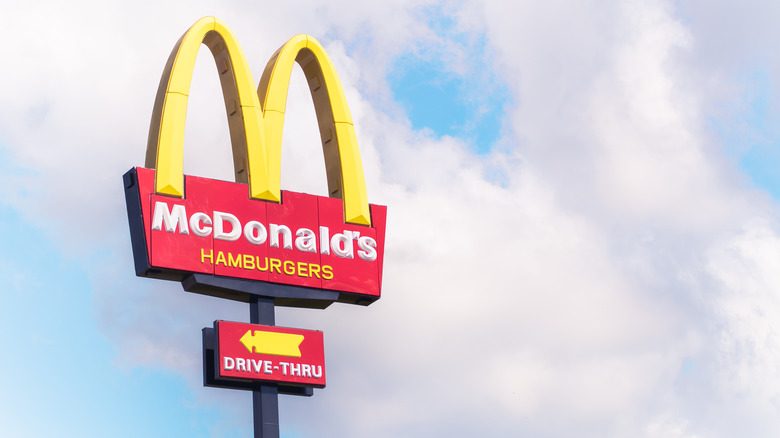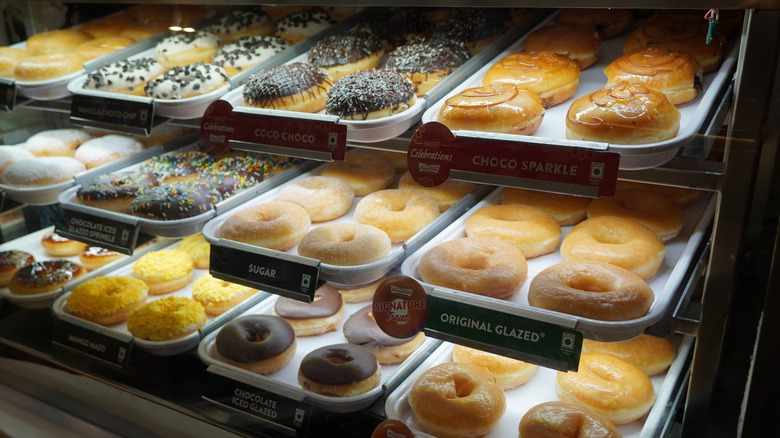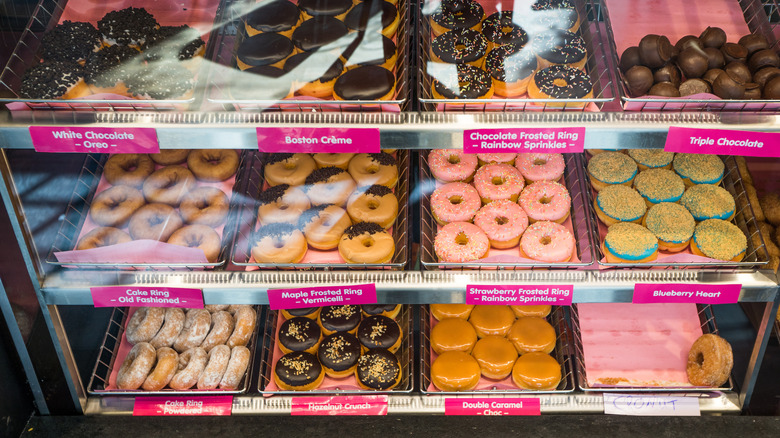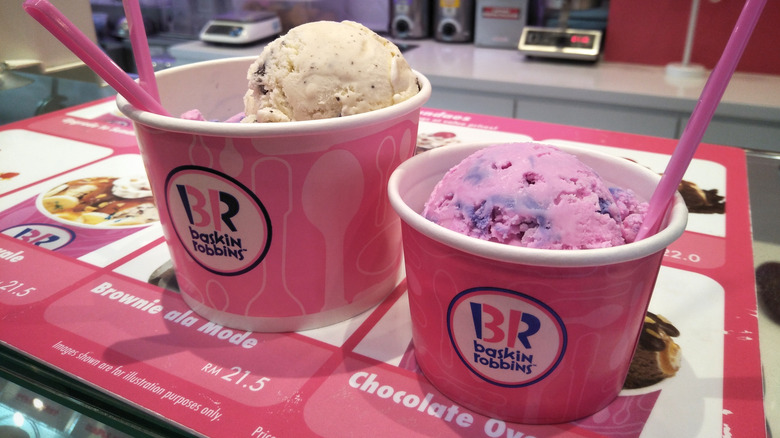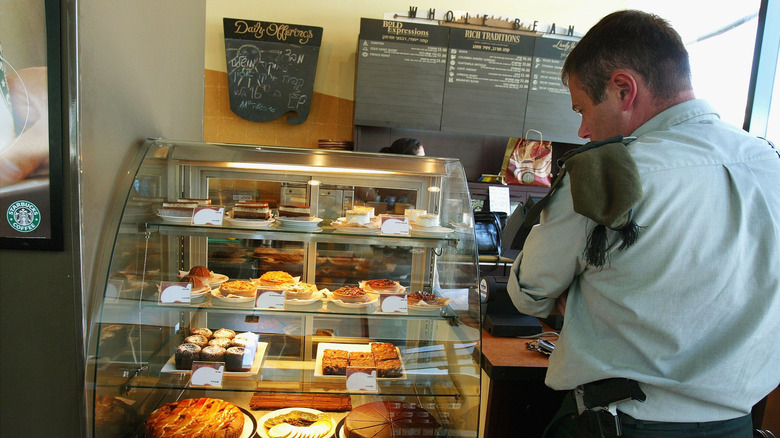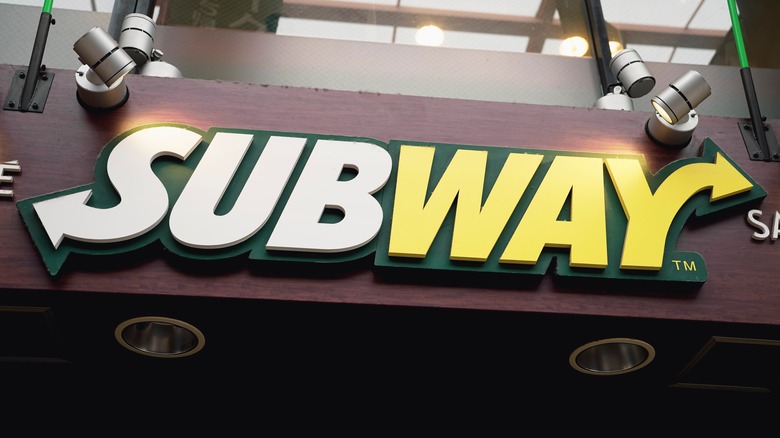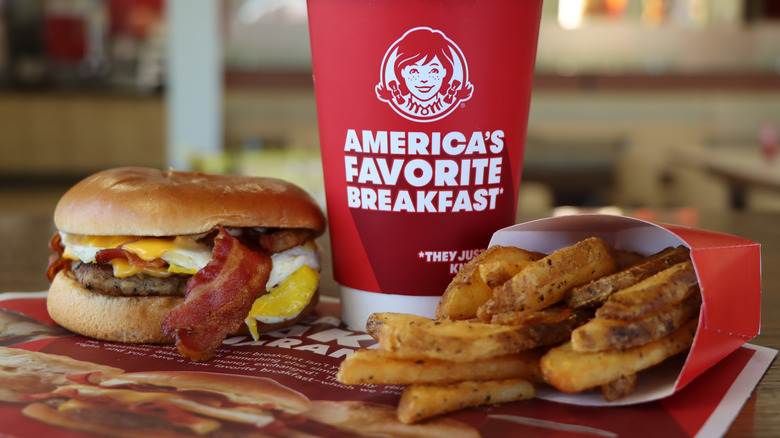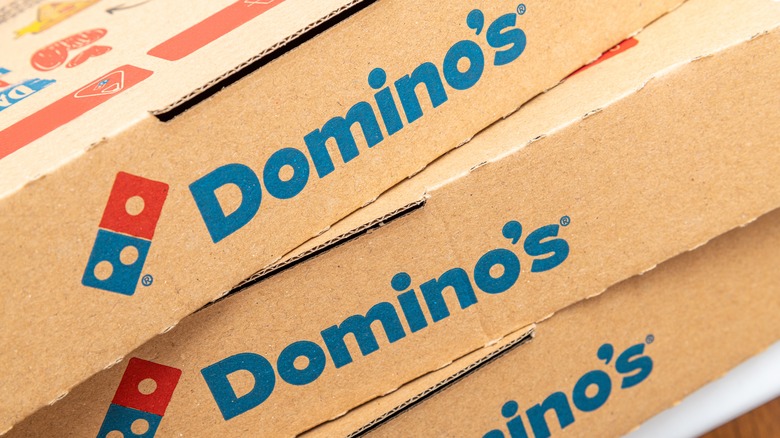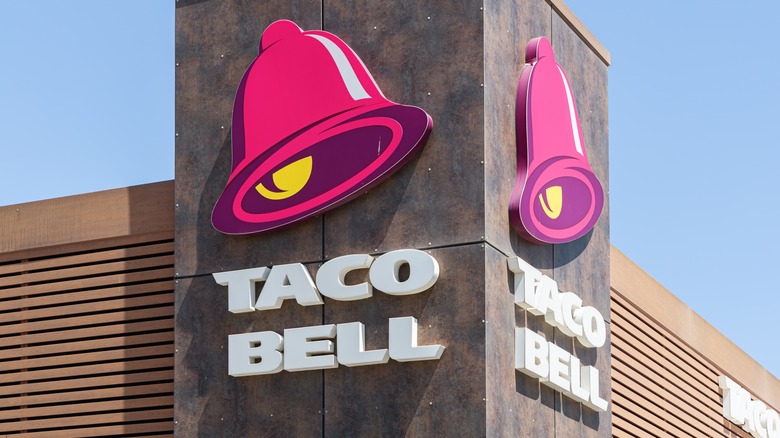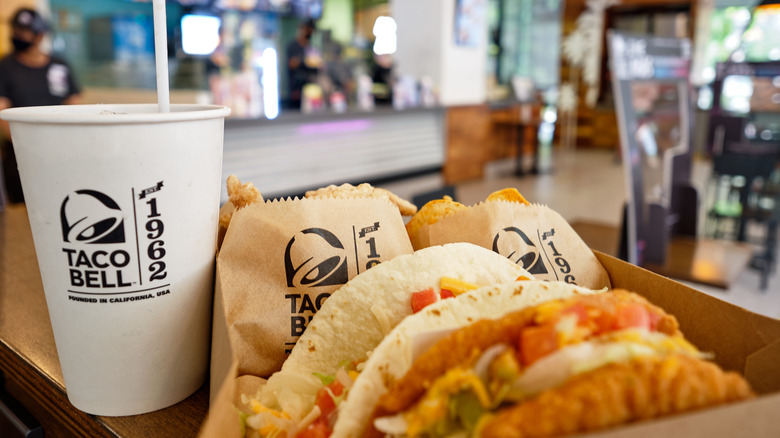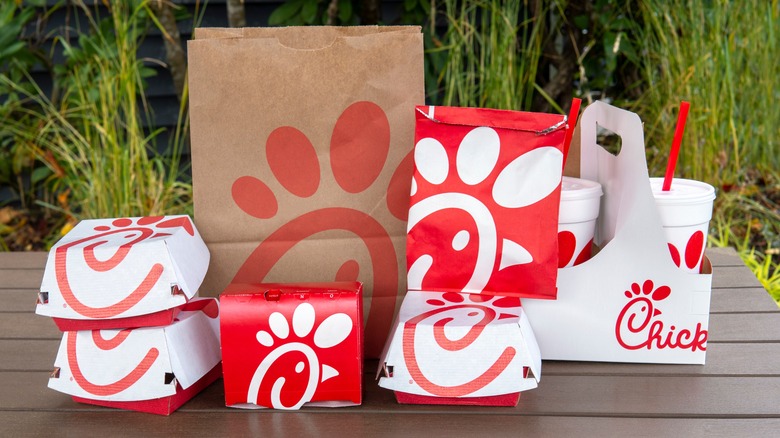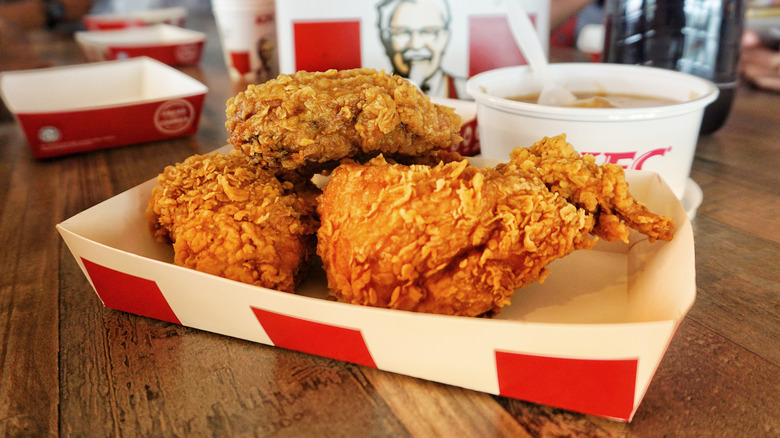Fast Food Chains That Failed In Other Countries And The Reasons Why
Americans love fast food. Americans love fast food so much, in fact, that on any given day, one person out of every three consumes fast food of some kind, which amounts to an awful lot of people in the drive-thru and register lines. Naturally, the fast food industry looks at all that success and concludes that it will have even more success by taking its operations overseas ... but it's not always that easy. Cultural and economic differences between Americans and international customers mean you can't always sell your products in the same way — or even at all — once you venture out of predictable American neighborhoods.
To be fair, there is actually such a thing as fast food chains that died out in the United States but still exist abroad. Example: Kenny Rogers Roasters disappeared from American neighborhoods in the '90s, but Asia's got around 140 of them, at least as of a 2011 report by Time Magazine. (There might be hope for an American comeback though since the Kenny Rogers Roasters website mentions franchise opportunities and a lone Southern California location.)
Mostly, though, it's safe to say that you may not find a McDonald's in every town or a Starbucks on every corner when you're traveling abroad. You might even have to resort to trying the local cuisine. Here's a closer look at fast food chains that couldn't hack it abroad, and the reasons why they retreated back to American shores with their tails between their legs.
McDonald's in Bolivia
McDonald's is the poster child of American fast food, in fact, the Golden Arches might even say "welcome to America!" just as clearly as the Statue of Liberty. With more than 13,000 U.S. locations and $8.71 billion in annual revenue from U.S. customers alone, it's no wonder the chain wanted to see what it could accomplish in faraway lands.
For the most part, McDonald's ventures abroad have been successful. The nearly $9 billion figure from America represents only around 38% of the company's annual revenue — the rest of the $23.22 billion it rakes in every year comes from its international locations. But not every nation loves a Big Mac. Bolivia, for example, did not want to super-size it, or even large-size it, and the chain hasn't had a presence there since 2002.
The reason for its retreat after just five years of trying is simple: McDonald's didn't make a lot of money in Bolivia. The whys are a little more complicated – CNBC says it probably had something to do with the country's general rejection of globalism and the fact that at the time, most Bolivians lived in poverty or "extreme poverty," so that didn't leave a whole lot of people who could afford a box of McNuggets. Additionally, Bolivians love their own food traditions, and there just wasn't any room for overpriced burgers.
Dunkin' Donuts in India
Donuts weren't invented in America (in fact, the donut probably originated in the Netherlands, where it was rather accurately dubbed "oily cake.") Donuts were definitely popularized in America, though, or more accurately, by American soldiers in World War I France, who, for some reason, were eating donuts while slogging around in the trenches. Anyway, today that o-shaped pastry loaded with more sugar than pre-donut Americans ate in an entire year is beloved by Homer Simpson and everyone else ... except for the entire country of India.
Dunkin' Donuts entered the Indian market in 2012 with enough enthusiasm that it was eventually able to open 77 locations. But it didn't last — in June of 2018, Dunkin' announced that it was shuttering all but 37 of its stores. The ones that remained, the company said, would focus on "core categories" and also sell tea.
So what gives, India? Well, as it turns out, donuts and coffee are kind of a breakfast thing, and Business Today says India just isn't really that into breakfast. According to the Dunkin' India website, the company is still hanging on there, but it appears to be down to 25 stores.
Dunkin' Donuts in Iceland
Dunkin' might be limping along in India but has worse luck in other places. Dunkin' Donuts gave up on cracking the Icelandic market back in 2019. According to Fréttablaðið (via the English-language Reykjavík Grapevine), the director of the company that ran Dunkin's Iceland operations said the costs of running the business there were just too high, and they evidently didn't think they could get away with raising prices to cover costs.
The real reasons might be slightly more nuanced than that — according to another Reykjavík Grapevine story, the 2015 arrival of the chain was met with mixed levels of enthusiasm. Some younger people appeared to be looking forward to donuts and coffee, while others declared their overall disgust. Local musician Krummi Björgvinsson even posted a photo of himself standing in front of the franchise, thumbs down, with a disparaging caption that included words like "conglomerate" and "uprising." Björgvinsson may have nailed it in a follow-up question, though, when he told the Reykjavík Grapevine reporter that tourists don't visit Iceland so they can experience western-style capitalism.
Baskin-Robbins in South Africa
Whatever you do or don't know about South Africa, you're not wrong if you guessed that summers there can be pretty hot, which makes it a natural fit for ... ice cream. That's what Baskin-Robbins thought, anyway.
The ice cream chain opened its first South Africa location in 2016. How'd that go? Well, three years later, it announced it would be closing Baskin-Robbins locations (though it's not clear just how many of them got the ax), citing poor performance. According to Niche Market, the problem was the same one you probably experience every time you try to buy salad dressing at your local supermarket: too much choice. South Africans like to keep things simple, and simply don't jive with 21 flavors (which by the way is actually 36). And unlike salad dressing, you can't keep all that ice cream around until it finally sells because it's not exactly shelf-stable.
Besides overwhelming new customers with choices, Niche Market also blamed part of Baskin-Robbins' failure on a sluggish economy. Unlike most Americans, it seems, South Africans are happy to cut back on ice cream when the going gets tough (you know, versus eating an entire pint right out of the carton while ugly crying over "The Last of Us" Episode 3).
Starbucks in Israel
If you're like 62% of America, you can't imagine getting through a day without consuming at least one cup of coffee. But just because you've normalized $5 Starbucks lattes as a daily staple doesn't mean the rest of the world views them the same way. A big corporation can dream, though, and that's exactly what Starbucks did in Israel: it dreamed. But alas, Starbucks' Israeli business venture lasted just two years – it opened its first location in 2001 and was gone by 2003.
Even if you're not business savvy, you can probably imagine at least some of the problems. The coffee giant wanted to avoid opening in cities that sometimes experienced suicide bomb attacks (like the capital city of Jerusalem). So instead, it opened in "foodie town" Tel Aviv, where there were already a ton of gourmet options for both locals and visitors, from fancy restaurants to street vendors. Starbucks might be used to beating the mom-and-pop cafes in America, but the ones in Tel Aviv would not go down so easily.
But Better Marketing thinks another reason for the chain's failure was that its fast-paced environment just didn't appeal to Israeli coffee drinkers, who don't really like to take their joe to go. Also, they just didn't like the taste of Starbucks coffee, and that's kind of a big hurdle to have to overcome.
Subway in Japan
Culture can be a big barrier to the international success of American fast food joints. Sometimes, there just isn't a place for greasy burgers or so-sweet-you-could-barf donuts in a country's way of life, and that can doom new restaurants before they even get started. Japan, though, doesn't really have a lot of qualms about American customs. In fact, the Land of the Rising Sun has happily embraced several American fast food brands, including McDonald's, Starbucks, and Wendy's. So Subway probably wasn't worried when it tried to jump on the "Japan hearts America" bandwagon.
Subway once had nearly 500 locations in Japan, but it's now down to less than 200. Why? Well, Unseen Japan says it's simple: the Japanese just aren't that into sandwiches. Yes, shockingly, the country that brought us sushi was not that impressed by Subway sandwiches.
Now, Unseen Japan does also note that there is at least a small sandwich tradition in Japan — notably, there's the katsu (fried pork cutlet) sandwich, which looks suspiciously like a large sushi roll made with bread instead of rice. But evidently, Subway did not attempt to cater to the very small appetite for sandwiches that already existed in the country, and instead gave itself the insurmountable challenge of trying to create a demand that didn't already exist. Also, the stores looked kinda trashy and the menu was complicated, which was enough to convince most customers to give Subway a pass.
Wendy's on an entire continent
McDonald's and Burger King are big in Europe, with locations everywhere from the United Kingdom to Romania. But there's one American burger joint you won't find anywhere in mainland Europe: Wendy's.
It's not for lack of trying. Wendy's once had a presence in parts of Europe, beginning in Munich, West Germany in the late 1970s. Their European run was pretty short, though, and no one seems to recall the actual reasons why they shuttered all their across-the-pond locations in the 1980s.
More importantly, Wendy's has failed to return to the European market, even though it evidently desperately wants to. The reason evidently has nothing to do with its weird square patties and everything to do with trademarks. Shortly after Wendy's European retreat, a small-time fish-n-chips shop trademarked the name "Wendy's," and that's basically been the sole mechanism behind the fast food giant's absence from Europe.
Wendy's, of course, fought back, because what self-respecting corporate giant won't squash a small business owner or two who gets in their way? But so far, European courts have not sided with big Wendy's, since little Wendy's technically owns the name. It's okay, though, because Wendy's has just started expanding into the U.K. — not part of Europe, you know, because Brexit.
Domino's in Italy
You probably won't be shocked to hear this, but as it turns out, Italians don't like American pizza. Yes, it's true. For some reason, Domino's thought opening restaurants in Italy was a good idea, and it was wrong. Just seven years after its first location opened in 2015, Domino's closed its doors for good. According to the BBC, COVID-19 lockdowns had at least something to do with the brand's departure, but social media comments hinted at a more insurmountable problem — Italians just didn't enjoy Domino's pizza. That's pretty obvious when you compare the chain's success in the U.K. to its ho-hum performance in Italy: The former has 1,200 locations, but in the latter, the brand "peaked" at a mere 29.
Domino's tried to set itself apart from other Italian pizza shops by offering home delivery and pineapple pizza (which is already super controversial in America, but whatever), but during the COVID lockdowns, delivery became more of a thing, and pineapple pizza alone just wasn't enough to elevate it above all of the thousands of other, much more traditional Italian pizzerias.
Taco Bell in Mexico
If you've ever eaten at a real Mexican taqueria, well, it ain't no Taco Bell. Don't misunderstand, there's a place for just about any kind of food wrapped up in a tortilla or stuffed into a taco shell, but the mere presence of a tortilla or taco shell does not make food Mexican. This probably has a lot to do with Taco Bell's failed run for the border.
To their credit, Taco Bell wasn't completely ignorant of the fact that the food that makes it popular in America likely wouldn't appeal to the locals. It even tried to make its tacos a little more authentic, with shredded meat instead of ground beef, soft corn tortillas instead of hard shells, and locally sourced sauces.
It's not clear how close Taco Bell got to mimicking a traditional taco, but the food itself isn't really what doomed them. Instead, Mental Floss says the locals took offense to the audacity of the chain and its attempt to out-taco the taco in its own birthplace. And, the food wasn't even that cheap. Locals could still buy an authentic taco from a street vendor and save money over Taco Bell's facsimile.
Well, that was a flop, but Taco Bell was undeterred. It tried again in the 2000s, this time with its regular Taco Bell menu, which it even advertised as "not pretend[ing] to be Mexican food." That flopped, too, and the chain went limping back over the border just three years later.
Taco Bell in Dubai
Taco Bell couldn't hack it in Mexico, where people already have big expectations about what a real taco should taste like. The Middle East, though, doesn't have those same assumptions, which may be why the chain decided to try its luck in Dubai.
Taco Bell opened its first Dubai location in the massive Dubai Mall, where it actually had a lot of success. Encouraged, the chain branched out into other local malls, and ... flopped. So why did it do so well in its first Dubai location, but not anywhere else?
CNBC says a couple of factors were working against Taco Bell in Dubai. First, the locals don't really have a taste for Latin American flavors (or Latin American-ish flavors), so tacos, burritos, and the like have never really been big performers there. The Dubai Mall is pretty touristy, so it might have been an especially favorable location because a good percentage of its visitors aren't locals. Even so, Dubai does have a few successful Latin American restaurants, but they aren't fast food places. In Dubai, the culture is more geared towards sit-down restaurants, so that's another reason why Taco Bell just didn't appeal to the masses.
Also, Taco Bell doesn't have much of an international presence (just 400 locations outside of the U.S., compared to nearly 18,000 for its sister brand KFC). Without that established familiarity, the locals might not have had any reason to consider giving Taco Bell a try.
Chick-fil-A in the U.K.
Chick-fil-A is probably America's most controversial fast food restaurant — its woes date all the way back to 2011 when Equality Matters uncovered $1 million in Chick-fil-A donations to anti-LGBTQ+ causes. Still, not every American shunned the fried chicken chain after the scandal broke, and Chick-fil-A has managed to weather the storm, for the most part. But the company's new identity as anti-LGBTQ+ has stuck with it for a long time, and it even followed the company across the pond when it tried to branch out into the United Kingdom.
Chick-fil-A opened up in a Reading, England shopping center in October 2019, and by the following April, it had already shut down. Officially, the shopping center decided not to renew the restaurant's lease, but unofficially it was because no one in the U.K. wanted to eat there. Similarly, a Chick-fil-A that opened in Scotland lasted only three months. It was sunk by local protests and a petition signed by 1,000 people. According to the Advocate, that location went down fast because of boycott calls, not just of the Chick-fil-A itself, but of the hotel where it was located and all the other hotels owned by the same company.
That was too much for hotel management, especially when the boycott spread to include its luxury property and the wealthy politicians who sometimes stayed there. Chick-fil-A got the boot and off it went, back to whence it came. At least it was a quick death.
KFC in Iran
Some countries enjoy a little bit of American culture, while others despise it. This is why companies like McDonald's and KFC will probably never have a presence in places that identify as enemies of the United States, such as Iran and North Korea. But it may surprise you to hear that American fast food did once have a presence in Iran. In fact, in the 1970s there was a McDonald's and a KFC in Tehran, Iran's capital city. That all came to an end in 1979, when the religious clerics seized control of the government following a two-year-long revolution. With Ayatollah Ruhollah Khomeini now in control of the nation, there was no longer any place in the nation for representatives of American culture, especially fast food. All those restaurants shuttered, and the country has been free from western-style burgers and fried chicken ever since.
Well, sort of. Not everyone celebrated the disappearance of American fast food. In today's Iran, you can find knock-off fast food joints like Sheak Shack, Pizza Hat, and Halal KFC. Although, not Halal KFC anymore because that knock-off was closed down by authorities a few days after its grand opening. The restaurant wasn't affiliated with KFC, but its logo featured the same black-and-white line art of Colonel Sanders everyone recognizes, so it's easy to see how the authorities could have made that mistake. So yes, KFC couldn't hack it in Iran, and fake KFC couldn't either.
